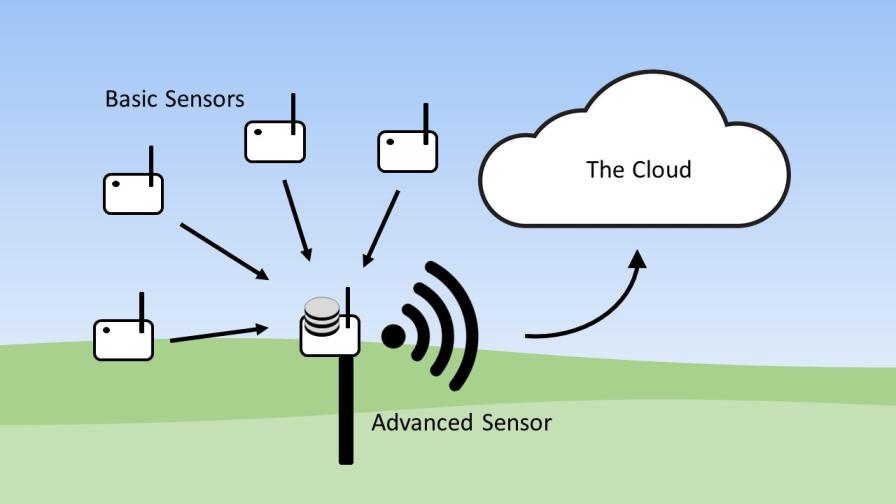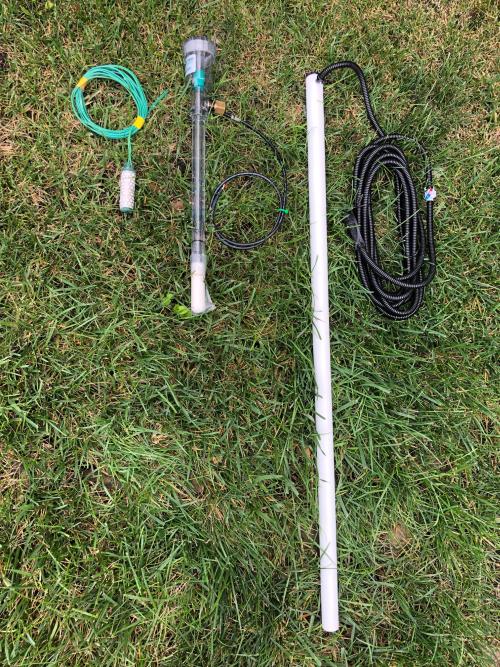Sensor Trends in Agriculture: Finding the Balance Between Affordable and Expensive

A possible architecture of sensors is to have a network of affordable sensors to address field-scale variability that communicate to a more expensive and advanced sensor that serves as a central hub.
Editor’s note: This article originally appeared on CropLife’s sister website PrecisionAg in Septemeber 2019.
Sensor technology in agriculture is inescapable today, writes Nate Dorsey at PrecisionAg. From farm equipment, to irrigation, to weather, sensor technology is firmly engrained in the industry. However, there is a fundamental question that remains largely unanswered, which is, what is the right number of sensors to have or install?
Prices of sensors have reduced significantly in recent years as technology has advanced. This closely follows other trends, such as the reduction in prices of computers, cameras, and TVs as reported by the Bureau of Labor Statistics. In the agriculture industry, this has resulted in a proliferation of sensor technology and an enormous amount of largely untapped data.
The effect of advancing sensor technology is twofold. First, simple sensors have become fairly affordable and ubiquitous, and second, some sensors have become significantly more advanced and retain a high price tag. Agriculture technology companies tend to be on either side of this divide. Some push for large amounts of simple sensors to better capture and address field-scale variability, while others encourage the deployment of a single, or small number of, advanced sensors that tend to be more expensive.
Soil Moisture Sensors as an Example
To illustrate this, consider soil moisture sensors. No market in the agriculture industry seems to have a higher concentration of sensors and companies. Some companies, such as Irrometer, manufacture simple and affordable sensors such as tensiometers and gypsum blocks. These sensors are quite accurate, but they can require more maintenance and getting data back tends to be a manual process. However, with a low average price of around $100 for a tensiometer and $40 for a Watermark gypsum block, a large number can be deployed in a field or greenhouse environment to better capture variability.

Soil moisture sensors range in price and capabilities from the more affordable Irrometer tensiometer and watermark that only provide soil moisture information to the more expensive Sentek Drill and Drop that provides data on soil moisture, temperature, and EC at various depths along a probe.
On the flipside you have probes such as the Sentek Drill and Drop that have a lot more technology packed inside, and are arguably one of the most advanced soil sensors on the market. The soil probe provides soil moisture, temperature, and electrical conductivity (EC) readings at regular intervals down its length. However, it is significantly more expensive than other options with prices starting around $800 and increasing from there depending on the length of the probe. At this price point, it’s unlikely that anyone would deploy more than one or two per field unless they’re being used for research purposes.
An Improved Model
So, therein lies the conundrum. In an effort to capture, understand, and address field variability, does one deploy a large number of affordable sensors with limited capabilities, or a small number of more advanced sensors that provide in-depth information at a micro-scale?
The answer is possibly a combination of the two, and it’s expected that the market will move in this direction in the future. This approach will likely use inexpensive sensors that are easy to install and maintain that will be scattered throughout an area. These sensors could then communicate back to a more advanced sensor that serves as a central hub. Then, either through edge computing, where data is processed inside the central hub, or by analysis in the cloud, a more complete picture of the field will be created.
The trick is that the simple and advanced sensors need to be seamlessly integrated and as easy to install, use, and maintain as possible. Assuming that farmers or service providers may install several in each field and in many fields in a given area, the process of installing sensors has to be as simple and non-time consuming as possible. This could include sensors for monitoring soil moisture, dendrometers for measuring plant growth, weather stations, and accompanying environmental sensors, and many others.
Simply put, once installed, these systems need to work. Time is of critical importance in the agriculture industry, and growers and service providers often don’t have the bandwidth to set up complicated computer programs, troubleshoot communication issues, or address broken or faulty sensors on top of their many other responsibilities. Aside from simple processes, such as assigning field names and locations, there should be very little else in the way of setup.
As with all technology, sensor technology in agriculture will continue to advance. As sensors continue to develop, they will become more accessible and affordable. With these changes, the approach to sensor architecture in the field will likely also evolve. A shift towards using affordable sensors to cover broad areas combined with a single or small number of more advanced sensors will provide the best insight on field conditions while balancing economics.





